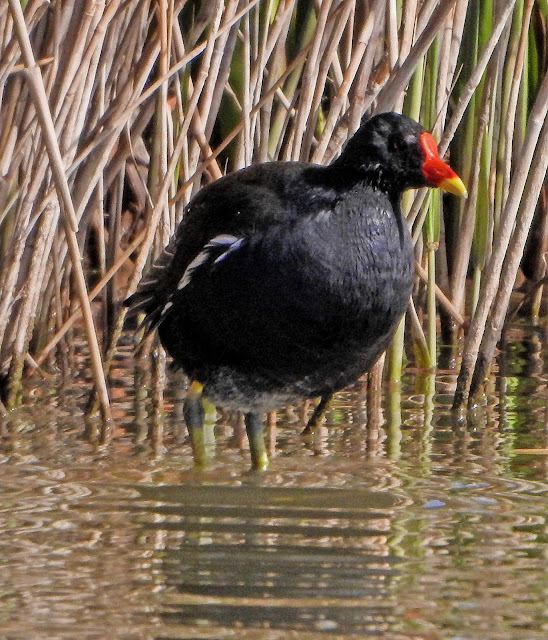This Blog contains Wildlife, Plants and Bird Photos from Walks, Safaris, Birding Trips and Vacations. Most of the pictures have been taken with my Nikon P900 and P950X cameras. Just click on any image for a larger picture. On the right column under the Blog Archive are the entries by date. Below that under Animal categories all the diffent species of Animals, Birds, Insects and Plants contained in the website are listed. Clicking on any entry will show all the entries for that species.
TOTAL PAGEVIEWS
TRANSLATE
Sunday, 20 February 2022
4-6-2019 LINYANTI CAMP, BOTSWANA - AFRICAN HAWK EAGLE (Aquila spilogaster)
The African hawk-eagle (Aquila spilogaster) is a large bird of prey. Like all eagles, it belongs to the family Accipitridae. This species’ feathered legs mark it as a member of the Aquilinae subfamily. The African hawk-eagle breeds in tropical Sub-Saharan Africa. It is a bird of assorted woodland, including both savanna and hilly areas but the tend to occur in woodland that is typically dry. The species tends to be rare in areas where their preferred habitat type is absent. This species builds a stick nest of around 1 m (3.3 ft) across in a large tree. The clutch is generally one or two eggs. The African hawk-eagle is powerfully built and hunts small to medium sized mammals and birds predominantly, occasionally taking reptiles and other prey as well. The call is a shrill kluu-kluu-kluu. The African hawk-eagle is considered a fairly stable species and a species of Least Concern per the IUCN.
The African hawk-eagle is uncommonly aggressive and bold predator. Their primary hunting tool is their powerful feet. In general, their sneaky foraging techniques recall a huge Accipiter. In terms of agility and hunting prowess, especially in terms of their short-distance flight after prey, they are also somewhat reminiscent of an Accipiter. Mostly the African hawk-eagle engages in still-hunting, wherein they scan from prey from an inconspicuous perch for a long period. When prey is spotted, the hawk-eagle engages in a low level dash from their perch in cover. They often uses cover to cloak their approach almost up the point where they strike. While it has been claimed that their flight is “silent”, it would presumably be more correct to say that the hunting hawk-eagle engages in minimal flapping flight so as to not alert prey to their approach. Often, the hawk-eagles wait near prey-concentrated areas, such as waterholes and among riparian trees for birds to come to drink or by clearings that birds frequently cross. African hawk-eagles may too quarter above the ground and seize any prey they surprise. They are capable of sometimes taking birds on the wing but usually prefer to catch them on the ground and may force avian prey intercepted in the air back to the ground. Often terrestrial birds are taken right around the moment they alight. In some instances, prey may be chased, even on foot, into thickets. African hawk-eagles have seldom been recording engaging a stoop from soaring flight to capture prey. Pairs of African hawk-eagles often hunt together and in these circumstances seem to engage in deliberate cooperation, one distracting, the other striking. They share this tendency for hunting in pairs with their sister species, the Bonelli's eagle, which has been implied to engage in tandem hunts possibly for sociosexual pairing reasons rather than for obtaining larger or more difficult prey, as is typically assumed of tandem-hunting raptors. One tandem hunting pair of African hawk-eagles appeared to remarkably make use of a mesh fence to drive guineafowl into in a cunning strategy to prevent their escape. Yet another pair of African hawk-eagles appears to derive much of its prey by regularly and opportunistically perching in a tree holding a fruit bat colony.
Saturday, 19 February 2022
Friday, 18 February 2022
Thursday, 17 February 2022
4-6-2019 LINYANTI CAMP, BOTSWANA - ARNOT'S CHAT (Myrmecocichla arnotti)
Arnot's chat (Myrmecocichla arnotti), also known as the white-headed black-chat, is a species of bird in the chat and flycatcher family Muscicapidae. The species is found in southern Africa from Rwanda and Angola to South Africa.
Arnot's chat is most commonly found in healthy stands of miombo and mopane woodland. It also occurs at lower densities in other kinds of open woodland with little herbaceous cover, and very rarely near buildings. It generally occurs from sea level to 1,500 m (4,900 ft). The species is generally not migratory, but is presumed to undertake some localized wandering.
Wednesday, 16 February 2022
Subscribe to:
Posts (Atom)






































